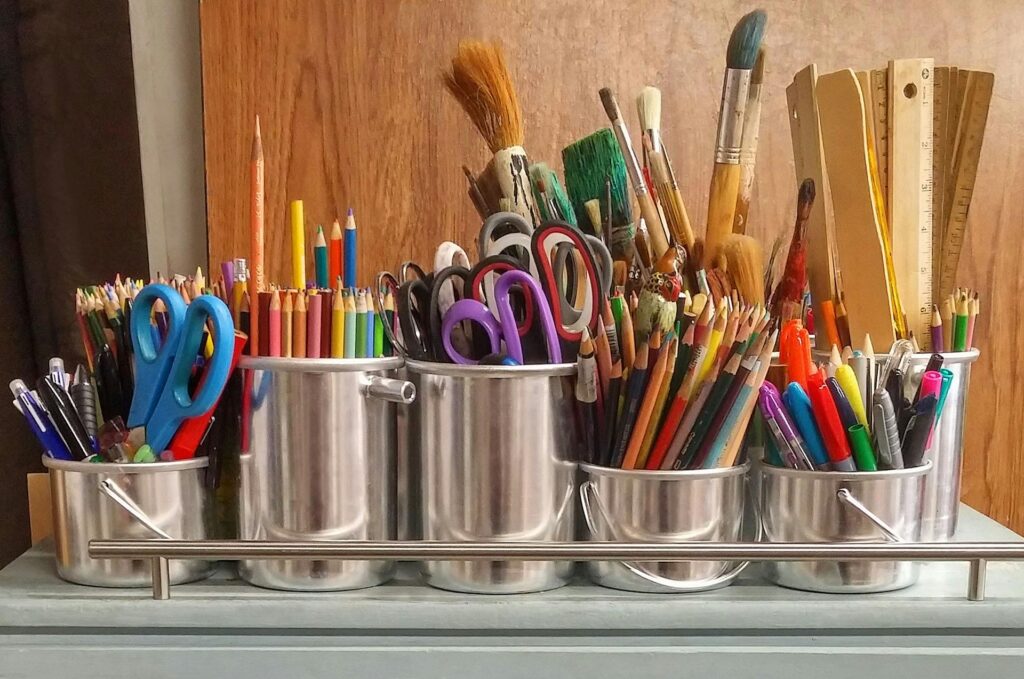I have lived my whole life on a school year calendar and even though I am officially “retired,” I still experience the rhythm of the school year. It used to be that the first bite of crisp air in late August reminded us that something was about to begin. These days though, school start and end dates are earlier. Schools are encouraged to get those 180 student days in, between the months of July/August through May.
Nevertheless, school supplies pile up in carts, calendars fill with new commitments, and a quiet tension gathers at home—the familiar promise of a new school year. Families ride the emotional wave of anticipation, nerves, and excitement. The school year calendar doesn’t just measure time, it sets the rhythm for our days, shaping how we plan, celebrate, and even rest. From the rush of back-to-school nights to the stillness of summer afternoons, this calendar weaves the story of our communities and keeps us connected to one another.
The Pulse of the School Year
The school year calendar acts like a metronome for our lives, reliably ticking from August through May. Its beat shapes each week with routines that both comfort and challenge us. We wake up to alarms, pack backpacks, and watch children grow—month by month, milestone by milestone.

The scent of sharpened pencils and the shine of new shoes mark fresh starts in the fall. We dive into lessons, settle into after-school routines, and learn the pace for each term. As leaves fall, so do the walls between classmates and neighbors, drawing us together for events and shared struggles.
Exams add a nervous energy every few weeks, sharpening our focus and testing our endurance. The air in homes buzzes with flashcards, quiet confidence, and sometimes tears. Holiday breaks bring welcome relief, with cups of hot chocolate and late mornings giving us a taste of freedom.
Spring brings lighter clothes, more daylight, and the promise of finishing lines. We cheer from bleachers, hang art projects on the fridge, and count down until the last bell of the year rings. Every season leaves its mark—both in memory and in the stories we tell as families.
Seasonal Shifts and Family Rituals

Our family calendars sync with the school year, creating rituals that repeat like old songs. Back-to-school shopping lines shelves with fresh notebooks and favorite snacks, signaling new opportunities. As we swap out jeans for shorts or rain boots for sneakers, the seasons shape our wardrobes and moods.
Fall brings homework at the kitchen table and apple-scented afternoons at school carnivals. Winter break means hot chocolate, movie marathons, and maybe a quick family trip—little windows of calm in a packed year. Spring arrives with field days and awards ceremonies, while summer whispers of lazy days and backyard barbecues.
Some rituals stick for generations — a pancake breakfast on the first day back, or a family hike when exams are done. These traditions anchor us and give our children something familiar to lean on, no matter how much else changes from year to year.
Community and Social Life Centered on School
The school calendar doesn’t just set the pace at home. It also shapes the social heartbeat of our towns. Football games gather neighbors under Friday night lights, while concerts and recitals fill auditoriums with applause and pride.
Parent-teacher meetings spark new friendships, sometimes over coffee or while wrangling younger siblings in the hallway. School fundraisers and bake sales pop up each month, blending duty with laughter. For many of us, the faces we greet in drop-off lines or on sidelines become part of our extended family.
Children swap stories in the cafeteria and form lifelong bonds during science fairs, team sports, or band rehearsals. We remember these moments long after they pass, coloring our sense of community with shared victories and struggles.
Opportunities and Challenges of Structuring Life by the School Calendar
Living by the school calendar comes with real perks as well as tough moments. Predictable routines help us manage our days, but the strict start and end dates don’t always fit every family’s needs.

Benefits of Predictable Structure
We find comfort in knowing what comes next. Planned breaks make it easier to schedule vacations, family reunions, or even just a chance to catch our breath. When everyone in the community operates on the same calendar, friends can spend more time together and support each other.
Predictability offers:
- Easier vacation planning, with set school breaks
- Time for children to recharge during holidays
- Clear points to focus on learning and growth
- Community-wide events that anchor friendships
Teachers and parents use these patterns to help kids set goals and see their progress. Each season offers its own rewards, building confidence as children move from one chapter to the next.
Pressures and Flexibility Gaps
Still, the calendar can sometimes feel inflexible. When a child gets sick or family moves mid-year, the transitions feel rocky. Working parents scramble to cover days when school is out, hunting for camps or childcare, juggling jobs and household needs.
Often, big life events—like job changes or relocations—don’t wait for the summer break. Instead, families must adjust on the fly, sometimes without a lot of help. Some of us find the jump from summer freedom back to school routines tough, while others struggle to fill the quieter days in June and July.
Parents who work outside the typical school schedule face more hurdles. Not every job allows for time off during school holidays, and many families rely on grandparents, neighbors, or community programs to fill in the gaps.
In my experience, living on the school year calendar shapes much more than our months, it shapes how we live together and what we remember most. Its rhythm ties us to friends, routines, and small joys that only happen because we measure time this way.

We can pause at the start of each new season and remember that every bell, break, and big game stitches memories into our everyday lives. Whether we feel in sync or offbeat, honoring these moments helps us thrive as families and communities. Let’s keep making the most of the school year’s melody, savoring the traditions and the natural cycles that bring us all together.
Have a great year my friends. Make the most of every opportunity and approach each problem as an opportunity to learn and to grow.




